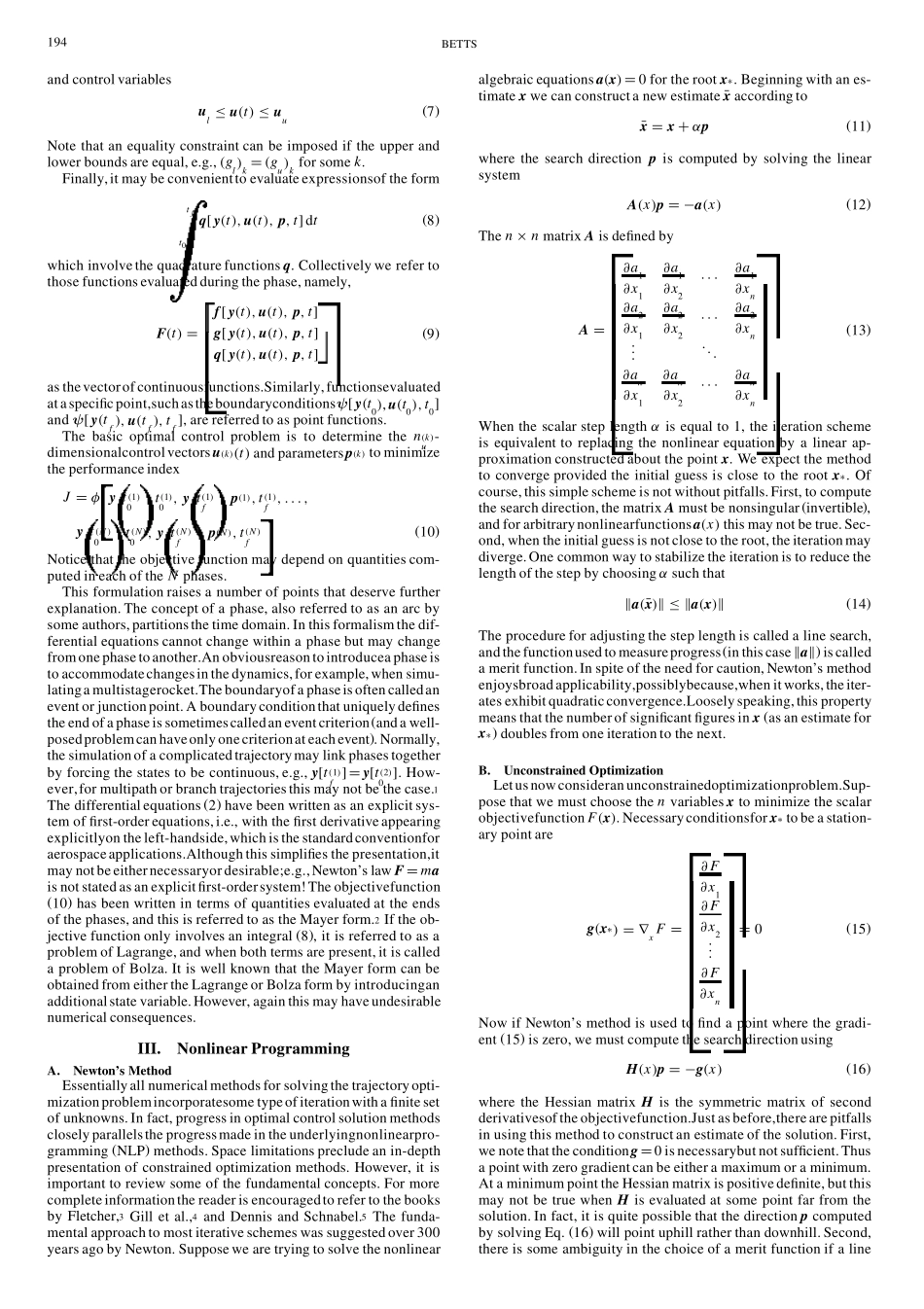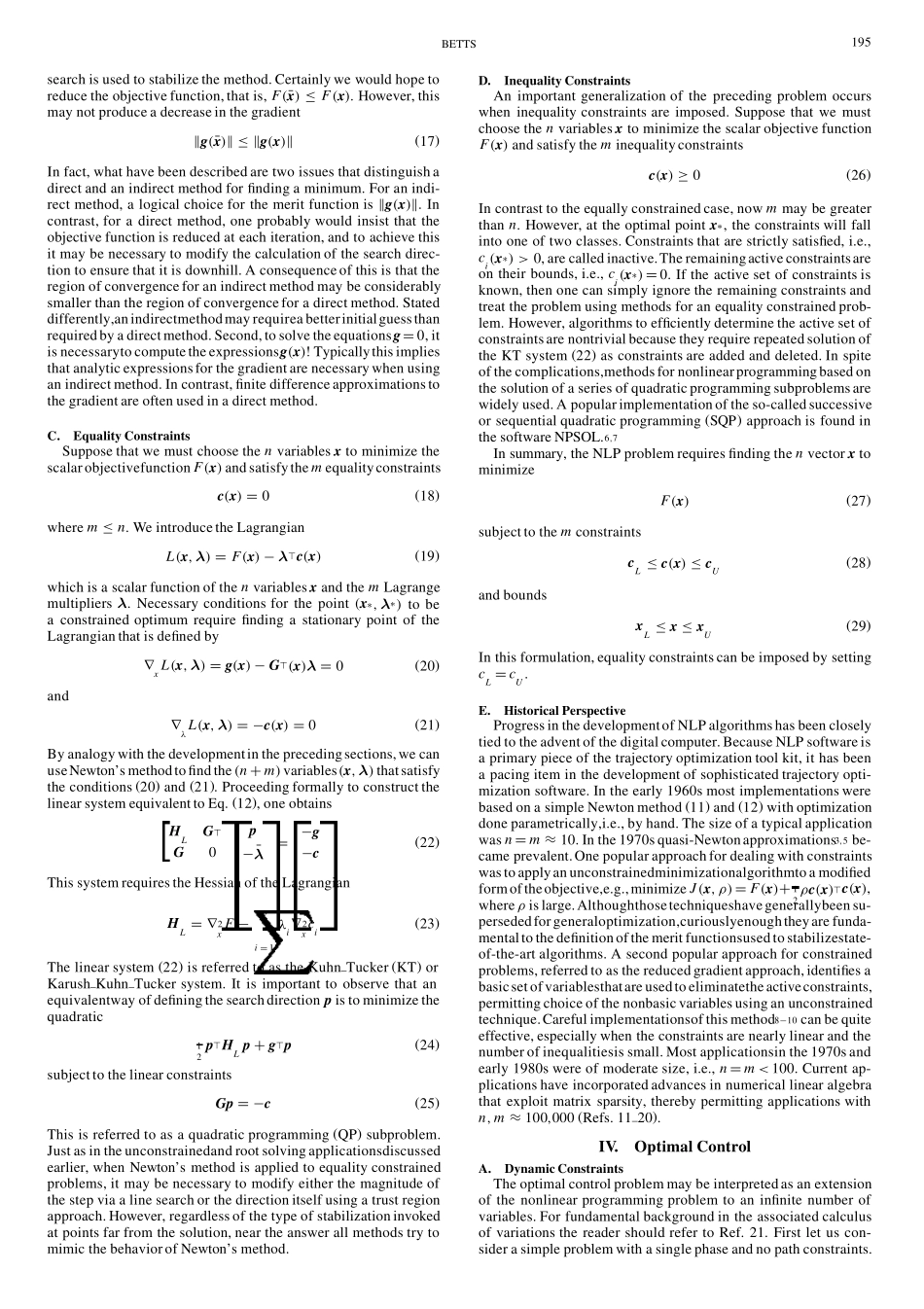JOURNAL OF GUIDANCE, CONTROL, AND DYNAMICSVol. 21, No. 2, March–April 1998Survey of Numerical Methods for Trajectory OptimizationJohn T. BettsBoeing Information and Support Services, Seattle, Washington 98124-2207I.IntroductionI T isnotsurprisingthatthedevelopmentof numericalmethodsfortrajectory optimization have closely paralleled the explorationof space and the developmentof the digital computer. Space explo-ration provided the impetus by presenting scientists and engineerswith challengingtechnicalproblems.The digitalcomputerprovidedthe tool for solving these new problems.The goal of this paper is toreviewthe state of the art in the eld looselyreferredto as trajectoryoptimization.Presentinga surveyof a eld as diverseas trajectoryoptimizationis a daunting task. Perhaps the most difcult issue is restricting thescope of the survey to permit a meaningful discussion within alimited amount of space. To achieve this goal, I made a consciousdecision to focus on the two types of methods most widely usedtoday,namely,directand indirect.I begin the discussionwith a briefreview of the underlying mathematics in both direct and indirectmethods. I then discuss the complications that occur when pathand boundary constraints are imposed on the problem description.Finally, I describe unresolvedissues that are the subject of ongoingresearch.A number of recurrentthemes appearthroughoutthe paper. First,the aforementioned direct vs indirect is introduced as a means ofcategorizing an approach. Unfortunately, not every technique fallsneatly into one category or another. I will attempt to describe thebenets and deciencies in both approaches and then suggest thatthe techniquesmay ultimatelymerge.Second, I shall attempt to dis-criminatebetween method vs implementat...


